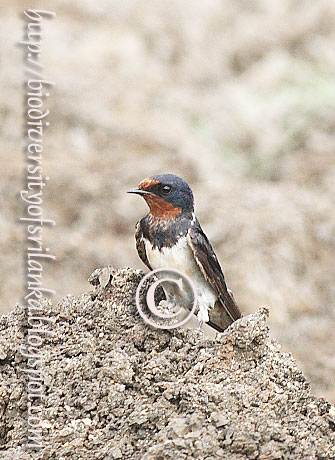This common endemic monkey found in jungles of all over the island. It is represented by three sub species in three major climatic zones.
Dry zone - Macaca sinica sinica
Wet zone - Macaca sinica aurifrons
It lives as family groups of about 20 or more. Each family group has its own territory and much of their time spend on ground or on tree tops of that demarcated area, in searching of food which consists of fruits, berries, insects, flowers, nestlings and eggs of birds, lizards, geckos, young rats and squirrels, etc. Highland sub species is much arboreal than two low land races. Toque monkey can store amazing amount of foods in their cheek-pouches and masticate them at leisure. It doesn’t have any particular breeding period and breeds throughout the year. Normally single young is born and twins can be born occasionally. Young can cling to its mothers breast fur and easily travels with her wherever she goes.




















